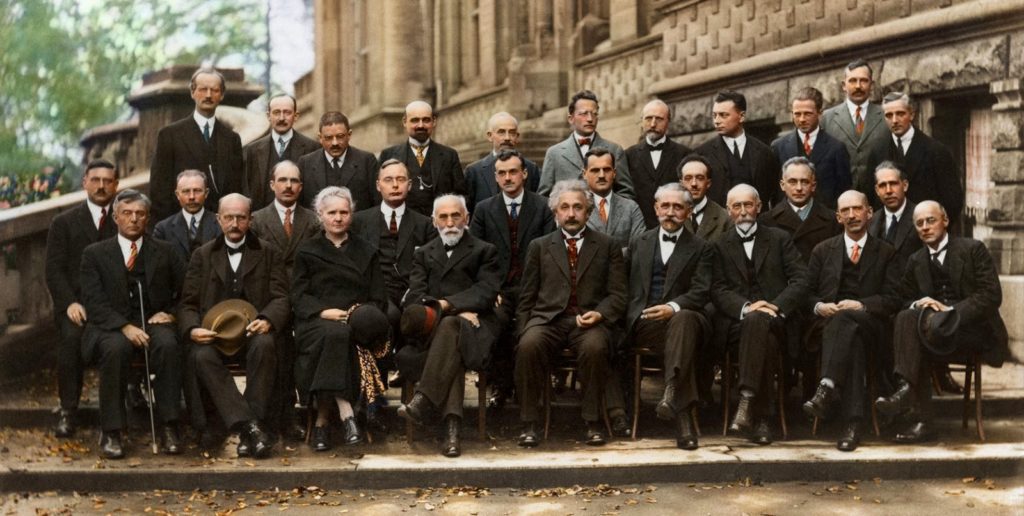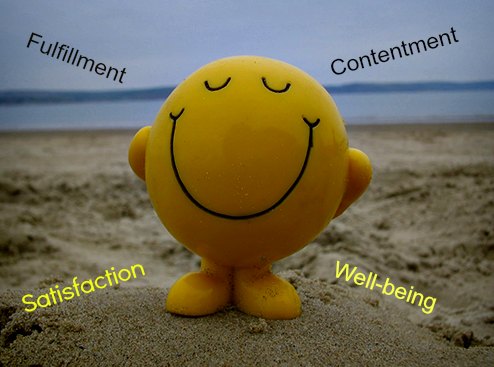by Darpan Sachdeva

Success isn’t a one-size-fits-all formula. After years of studying successful individuals across different fields, cultures, and eras, I’ve discovered that while paths to success may vary, certain fundamental principles remain constant. These principles transcend geographical, cultural, and economic boundaries, forming what I call the nine enlightened pathways to success.
1.Vision and Fear Conquest

The journey to extraordinary achievement invariably begins with two fundamental elements: a crystal-clear vision that ignites the soul and the courage to conquer the fears that stand in its way. This powerful combination has been the driving force behind history’s most remarkable success stories, transforming ordinary individuals into pioneers, innovators, and change-makers.
Consider Elon Musk’s audacious journey. When he invested his PayPal fortune into Tesla and SpaceX, industry experts labeled him delusional. The automotive industry hadn’t seen a successful new car company in nearly a century, and private space exploration was considered impossible. Yet, Musk’s vision transcended conventional wisdom. In 2008, facing simultaneous crises with both companies and his last remaining funds, he stood at the precipice of total failure. Instead of succumbing to fear, he doubled down on his vision. Today, Tesla has revolutionized the automotive industry, making electric vehicles aspirational, while SpaceX has redefined space exploration possibilities. His vision wasn’t just about creating successful companies; it was about accelerating humanity’s transition to sustainable energy and making life multi-planetary.
Malala Yousafzai’s story epitomizes how vision can triumph over the most paralyzing fears. Growing up in Pakistan’s Swat Valley under Taliban rule, she envisioned a world where every girl could access education. Even after surviving an assassination attempt at age 15, her vision remained unshaken. Instead of letting fear silence her, she amplified her voice globally, becoming the youngest Nobel Prize laureate and establishing the Malala Fund, which continues to fight for girls’ education worldwide.
Walt Disney’s journey also exemplifies this principle magnificently. After facing multiple bankruptcies and being told he “Lacked creativity,” Disney held onto his vision of creating magical entertainment experiences. His first animation studio failed, and he once couldn’t even pay his rent. Yet, his vision of Disneyland – a place where parents and children could have fun together – remained crystal clear. Despite banks rejecting his theme park idea 302 times, his unwavering vision and courage to persist transformed entertainment forever.
Sara Blakely, the founder of Spanx, demonstrates how conquering daily fears can lead to extraordinary success. Despite having no fashion or retail experience, she envisioned revolutionizing the undergarment industry. She faced constant rejection, ridicule, and self-doubt. Instead of letting fear paralyze her, she used it as fuel. She pitched her product to Neiman Marcus in their bathroom to ensure she got noticed, and personally sold her products in stores during weekends while maintaining her day job. Her vision and courage turned Spanx into a billion-dollar empire and made her the youngest self-made female billionaire.
Nelson Mandela’s vision of a free, democratic South Africa sustained him through 27 years of imprisonment. Rather than letting fear and bitterness consume him, he transformed his prison experience into preparation for leadership. His vision of reconciliation rather than retribution helped prevent civil war and created the “Rainbow Nation.”
The common thread among these success stories is that vision provides the destination while conquering fear enables the journey. Vision without the courage to face fears remains a dream, while courage without clear vision is merely reckless action. The synthesis of both creates an unstoppable force.
To cultivate this powerful combination in your own journey:
1.Develop crystal-clear vision by asking yourself what truly matters to you and what impact you want to create.
2.Acknowledge your fears but don’t let them define your actions.
3.Break down your vision into actionable steps, making the journey less daunting.
4.Surround yourself with supporters who believe in your vision.
5.Remember that fear is often a compass pointing toward growth opportunities.
The path to extraordinary success requires embracing both the clarity of vision and the courage to face fears. As these remarkable individuals have shown, when you combine unwavering vision with the determination to conquer fears, you create the foundation for transformational success that can change not only your life but potentially the world.
2.Power of Association

Jim Rohn’s profound observation that:
“You are the average of the five people you spend the most time with”
isn’t just a catchy quote – it’s a fundamental truth that has shaped the trajectories of some of the world’s most remarkable success stories. This principle of association has been a cornerstone in creating not just individual successes, but entire ecosystems of excellence.
Consider the transformative power of associations in Silicon Valley. When Steve Jobs and Steve Wozniak first collaborated in Jobs’s garage, they weren’t just working on a computer – they were creating a culture of innovation that would revolutionize technology. Their early team members, including Mike Markkula and Andy Hertzfeld, formed a collective that pushed boundaries and challenged conventional thinking. This association of brilliant minds didn’t just create Apple; it set new standards for what was possible in personal computing and design.
The PayPal Mafia presents another compelling example. What started as a group of ambitious entrepreneurs working together at PayPal evolved into a network that has shaped the modern digital economy. Elon Musk went on to found Tesla and SpaceX, Peter Thiel became an influential venture capitalist and co-founded Palantir, Reid Hoffman created LinkedIn, and Chad Hurley co-founded YouTube. Their continued association and mutual support created a multiplier effect, generating waves of innovation across multiple industries.
Looking beyond tech, consider the remarkable story of the “Inklings” – the literary discussion group that included C.S. Lewis and J.R.R. Tolkien. Their regular meetings at Oxford’s Eagle and Child pub weren’t just social gatherings; they were intellectual crucibles where “The Lord of the Rings” and “The Chronicles of Narnia” were refined and developed. Their association elevated not just their individual works but transformed the entire fantasy genre.
In the world of sports, Michael Jordan’s association with coach Phil Jackson and teammates like Scottie Pippen created not just championship victories but a legacy of excellence that transformed professional basketball. Their collective drive for perfection pushed each member to achieve heights they might never have reached alone.
The power of association extends to the business world as well. Warren Buffett’s long-standing partnership with Charlie Munger has been instrumental in building Berkshire Hathaway into an investment powerhouse. Their complementary perspectives and shared commitment to value investing principles have created one of the most successful investment track records in history.
But the power of association isn’t limited to peer relationships. Mentorship represents another crucial form of association. Oprah Winfrey often credits her early mentor, Maya Angelou, for shaping her perspective and approach to life. This relationship helped transform Oprah from a local news anchor to a global media icon and philanthropist.
To harness the power of association effectively, consider these strategic approaches:
1.Intentionally seek out relationships with people who inspire and challenge you.
2.Join or create mastermind groups in your field of interest.
3.Attend industry conferences and networking events where you can connect with like-minded individuals.
4.Leverage digital platforms to build relationships with mentors and peers globally.
5.Contribute value to your associations – strong relationships are built on mutual benefit.
Remember, powerful associations aren’t just about networking or collecting business cards. They’re about creating meaningful connections with people who share your values and ambitions, who challenge your thinking, and who inspire you to reach higher.
The power of association is a force multiplier for success. Just as iron sharpens iron, the right associations can sharpen your skills, expand your perspective, and accelerate your journey to success. In today’s interconnected world, your ability to build and nurture powerful associations might be the single most important factor in achieving your goals and realizing your full potential.
Choose your associations wisely, nurture them intentionally, and watch as they become catalysts for your own success story.
3.Drive for Excellence

The pursuit of excellence is not merely about achieving goals; it’s about cultivating an unwavering internal fire that burns bright while maintaining a serene spirit. This delicate balance of passionate drive and inner calm has been the hallmark of history’s most remarkable achievers.
Consider Michael Jordan’s legendary journey in basketball. His drive for excellence wasn’t just about winning championships; it was about redefining what was possible on the court. After being cut from his high school basketball team, Jordan didn’t just practice – he transformed his disappointment into determination. He would arrive at practice before sunrise and leave long after sunset, perfecting every aspect of his game. Yet, in the most pressure-filled moments, his composure was remarkable. This combination of relentless drive and mental equilibrium enabled him to make game-winning shots that became the stuff of legend.
Michelle Obama’s path exemplifies how excellence can be pursued across different life domains while maintaining grace under pressure. From Chicago’s South Side to Princeton, from corporate law to community service, and ultimately to becoming First Lady, she never compromised her authenticity or values. Her initiative “Let’s Move!” demonstrated how personal excellence could be channeled into societal impact, while her bestselling memoir “Becoming” inspired millions to pursue their own paths to excellence.
Elon Musk’s drive for excellence showcases how ambitious vision can be coupled with meticulous execution. Despite facing numerous setbacks with Tesla and SpaceX, his unwavering commitment to advancing human capabilities in sustainable energy and space exploration has revolutionized multiple industries. His famous 100-hour workweeks are balanced with strategic thinking and calculated risk-taking, demonstrating that excellence requires both intensity and intelligence.
In the business world, Indra Nooyi’s rise to become PepsiCo’s CEO exemplifies excellence through continuous learning and adaptation. While maintaining grueling 18-hour workdays, she never lost sight of her core values or her commitment to transforming PepsiCo into a more sustainable and health-conscious company. Her practice of writing thank-you notes to employees’ parents shows how excellence can be pursued while maintaining human connection.
The common thread among these exemplars is their ability to maintain what Buddhists call “equanimity in action” – intense drive coupled with inner calm. This combination allows them to:
1.Push boundaries while staying grounded.
2.Face setbacks with resilience and grace.
3.Inspire others through both achievement and conduct.
4.Maintain long-term focus without burning out.
5.Transform personal excellence into societal impact.
The drive for excellence isn’t about perfectionism; it’s about continuous growth and improvement while maintaining mental and emotional balance. It’s about understanding that true excellence is sustainable only when it comes from a place of inner peace and authentic purpose.
As demonstrated by these remarkable individuals, excellence isn’t a destination but a journey of consistent growth and improvement. It requires the courage to set ambitious goals, the discipline to work towards them systematically, and the wisdom to maintain perspective and balance throughout the process.
The key is to cultivate what the ancient Greeks called “arete” – excellence not just in skill, but in character. This holistic excellence creates not just personal success, but a lasting legacy that inspires others to pursue their own paths to greatness.
Remember, excellence is not about being better than others; it’s about being better than your previous self while maintaining the composure and clarity to make your journey meaningful and impactful!
4.Presence and Leadership

True leadership transcends mere authority – it’s an ethereal quality that combines presence, vision, and the ability to inspire others to reach their highest potential. When we examine the lives of extraordinary leaders who have left indelible marks on history, we find that their success wasn’t just about making decisions; it was about embodying a presence that transformed lives and institutions.
Nelson Mandela’s journey exemplifies this transformative presence. After spending 27 years in prison, he emerged not with bitterness but with a vision of reconciliation that changed South Africa’s destiny. His leadership wasn’t founded on revenge but on forgiveness and unity. Mandela’s presence in a room would command attention not through force but through an authentic aura of dignity and wisdom. His famous quote, “It always seems impossible until it’s done,” wasn’t just words – it was a living testament to his leadership philosophy that inspired millions.
In the corporate world, Satya Nadella’s leadership at Microsoft presents a masterclass in transformational presence. When he took the helm in 2014, Microsoft was losing its innovative edge. Instead of maintaining the aggressive corporate culture of the past, Nadella introduced a leadership style based on empathy, continuous learning, and collaborative growth. His presence transformed Microsoft from a competitive, siloed organization into a growth-mindset driven powerhouse. Under his leadership, Microsoft’s market value grew from $300 billion to over $2 trillion, proving that authentic, empathetic leadership can drive extraordinary business success.
Mary Barra, CEO of General Motors, demonstrates how presence and leadership can revolutionize traditional industries. As the first female CEO of a major automotive company, her presence has challenged industry norms. But it’s her authentic leadership style, focusing on accountability, innovation, and cultural transformation, that has steered GM through significant challenges and towards an electric future.
Leadership presence isn’t about being the loudest voice in the room – it’s about creating resonance with others. Take Barack Obama’s journey from community organizer to President. His leadership style, characterized by thoughtful dialogue and inclusive decision-making, demonstrated how presence can bridge divides and inspire hope across diverse communities.
In the technology sector, Indra Nooyi’s 12-year tenure as PepsiCo’s CEO showcases how authentic leadership presence can drive both purpose and profit. Her “Performance with Purpose” vision transformed PepsiCo’s corporate culture while delivering exceptional shareholder returns. Her ability to maintain her authentic self – sometimes even writing personal letters to employees’ parents – while leading a global corporation proves that leadership presence can be both powerful and personal.
To develop leadership presence, one must focus on several key elements:
1.Authentic Self-Expression: Being genuine in your interactions and decisions.
2.Emotional Intelligence: Understanding and connecting with others’ perspectives.
3.Clear Vision: Maintaining and communicating a compelling future direction.
4.Consistent Values: Demonstrating unwavering commitment to core principles.
5.Active Listening: Showing genuine interest in others’ ideas and concerns.
6.Adaptive Communication: Adjusting your style to connect with different audiences.
Remember, true leadership presence isn’t about perfection – it’s about progression. As Jack Ma, Alibaba’s founder, often emphasizes, “Leadership is about making others better as a result of your presence and making sure that impact lasts in your absence.”
In today’s interconnected world, leadership presence has become more crucial than ever. Whether in a virtual meeting room or a physical space, the ability to project authentic leadership presence can be the difference between mere management and truly transformational leadership.
Your leadership presence is your unique signature on the world. Cultivate it with intention, express it with authenticity, and use it to create positive change that extends far beyond your immediate sphere of influence.
5.Creative Paradigm Shifts

The most revolutionary successes often emerge not from creating something entirely new, but from seeing the existing world through a different lens. Creative paradigm shifts represent the courage to challenge conventional wisdom and transform ordinary perspectives into extraordinary innovations.
Consider Steve Jobs, who didn’t invent the mobile phone or the computer, but revolutionized how we interact with technology. His famous quote,
“People don’t know what they want until you show it to them,”
embodies the essence of creative paradigm shifts. Jobs saw technology not as mere functional tools but as extensions of human creativity and lifestyle. This shift in perspective led to the creation of products that transformed multiple industries and redefined our digital existence.
Reed Hastings’ journey with Netflix presents another compelling example. When facing frustration over a late fee for a rented movie, instead of simply accepting the status quo of video rentals, he questioned the entire model. His paradigm shift wasn’t just about eliminating late fees; it was about reimagining how people consume entertainment. This revolutionary thinking evolved from DVD-by-mail to streaming services, fundamentally changing how the world experiences content.
The story of Muhammad Yunus, founder of Grameen Bank, demonstrates how creative paradigm shifts can transform entire societies. Traditional banking systems saw poor people as non-creditworthy, but Yunus saw them differently – as untapped entrepreneurs with immense potential. His microfinance model, born from this shift in perspective, has lifted millions out of poverty and earned him a Nobel Peace Prize.
Elon Musk’s approach to multiple industries exemplifies how creative paradigm shifts can span across different sectors. Whether it’s reimagining electric cars as desirable luxury vehicles with Tesla, revolutionizing space travel with reusable rockets at SpaceX, or conceptualizing high-speed transportation through the Hyperloop, Musk consistently challenges established norms by seeing possibilities where others see limitations.
Jan Koum’s creation of WhatsApp emerged from a paradigm shift in how we view communication. Growing up in a community where international calls were prohibitively expensive, he envisioned a world where distance shouldn’t determine our ability to connect. This shift in perspective led to an application that now connects billions of people globally.
The journey of Howard Schultz with Starbucks represents another powerful paradigm shift. He didn’t invent coffee or cafes, but he reimagined the coffee shop as a “third place” between home and work. This shift transformed a commodity beverage into an experience, creating a global cultural phenomenon.
These success stories teach us that creative paradigm shifts require:
1.The courage to question established norms.
2.The ability to see beyond current limitations.
3.The persistence to pursue your unique vision despite skepticism.
4.The skill to translate different perspectives into practical solutions.
5.The patience to allow transformative ideas to evolve and mature.
To cultivate your own creative paradigm shifts, start by challenging your assumptions about everyday things. Ask yourself: “Why does it have to be this way?” “What if we approached this differently?” “What needs aren’t being met by current solutions?”
Remember, paradigm shifts often face initial resistance because they challenge deeply ingrained beliefs and practices. When James Dyson proposed a bagless vacuum cleaner, he was met with skepticism and rejection. It took 5,126 failed prototypes before success, but his persistence in seeing vacuum technology differently ultimately revolutionized the industry.
The power of creative paradigm shifts lies not in their immediate acceptance but in their potential to reshape reality. They remind us that the most significant barriers to innovation often aren’t technological or financial, but perceptual. By training ourselves to see the world through fresh eyes, we open doors to possibilities that others might miss.
In your journey toward success, cultivate the habit of questioning the ordinary and imagining the possible. Your unique perspective might just be the key to unlocking the next revolutionary innovation that changes the world.
6.Mindful Persistence

Success requires persistence guided by wisdom. While raw determination is valuable, it’s the combination of unwavering persistence and mindful adaptation that truly unlocks extraordinary achievements. This powerful fusion creates what we call “Mindful Persistence” – a strategic approach to never giving up while continuously learning, adapting, and evolving.
J.K. Rowling’s journey with Harry Potter exemplifies this principle perfectly. Facing rejection from twelve publishing houses didn’t simply make her persist blindly; instead, she refined her manuscript, strengthened her narrative, and strategically approached each new opportunity. Similarly, Jack Ma’s path to creating Alibaba wasn’t just about trying repeatedly – it was about learning from each failure, adapting his approach, and persisting with enhanced wisdom.
The power of mindful persistence is beautifully illustrated in the journey of James Dyson, who created 5,126 failed prototypes before finally developing his revolutionary bagless vacuum cleaner. What’s remarkable isn’t just the number of attempts, but how each failure informed the next iteration. Dyson didn’t merely repeat the same process; he analyzed each failure, incorporated new insights, and persistently moved forward with accumulated wisdom. This approach eventually led to building a multi-billion-dollar empire that transformed household technology.
Consider the inspiring story of Arianna Huffington, founder of The Huffington Post. Her second book was rejected by 36 publishers, and her bid for California governor in 2003 was unsuccessful. However, each setback strengthened her resolve and provided valuable insights about media, public engagement, and digital communication. She persisted mindfully, learning from each experience, which ultimately led to creating one of the most influential digital media platforms in the world.
The journey of Howard Schultz, the architect of Starbucks’ global success, provides another powerful testament to mindful persistence. Before building the coffee empire we know today, Schultz was rejected by 242 investors. Rather than simply repeating his pitch, he refined his business plan with each rejection, carefully noting investors’ concerns and adapting his approach. He used each ‘no’ as an opportunity to strengthen his vision and strategy, eventually transforming a local coffee shop into a global phenomenon with over 30,000 stores worldwide.
Colonel Harland Sanders, the founder of KFC, embodies mindful persistence in its purest form. At age 65, when most people consider retirement, Sanders began his journey. His famous chicken recipe was rejected 1,009 times before finding success. What’s crucial to note is that with each rejection, he didn’t just move to the next opportunity – he refined his recipe, adjusted his presentation, and adapted his approach based on feedback. This mindful persistence eventually led to building one of the world’s largest restaurant chains.
The story of Vera Wang, who entered the fashion industry at age 40 after a failed figure skating career and journalism aspirations, demonstrates how mindful persistence can lead to success in unexpected ways. Initially rejected from the U.S. Olympic team and later facing challenges in the fashion industry, Wang persisted while continuously evolving her approach. She studied the industry, learned from setbacks, and adapted her designs based on market feedback. Today, she’s one of the world’s most renowned fashion designers.
These success stories share a common thread:
They combine unyielding persistence with mindful adaptation.
This isn’t about blind stubbornness or refusing to change course. Instead, it’s about maintaining your core vision while being willing to adapt your approach based on experience and feedback. It’s about learning from each setback, refining your strategy, and moving forward with greater wisdom.
Mindful persistence teaches us that the path to success isn’t just about getting back up after each fall – it’s about getting up smarter, stronger, and more informed than before. It’s about maintaining the delicate balance between unwavering determination and flexible adaptation, between staying true to your vision and being willing to evolve your approach.
Remember, success rarely comes from simply trying the same thing repeatedly. It comes from persistent effort guided by accumulated wisdom, continuous learning, and strategic adaptation. This is the essence of mindful persistence – a crucial ingredient in the recipe for enlightened success.
7.Inner Happiness

True success extends far beyond the conventional metrics of wealth, fame, or social status. It’s deeply rooted in inner fulfillment – a state of being where contentment, purpose, and joy converge to create lasting happiness. This profound truth has been exemplified by numerous remarkable individuals who’ve achieved extraordinary success while maintaining their inner peace and authenticity.
Consider the journey of Michelle Obama, who despite reaching the pinnacle of power as First Lady, consistently emphasizes that her greatest satisfaction comes from staying true to her values and helping others. Her memoir “Becoming” reveals that her most fulfilling moments weren’t in the White House, but in connecting with people and nurturing her family. This inner contentment has made her one of the most influential and respected figures globally, transcending political boundaries.
Richard Branson, the founder of Virgin Group, embodies the philosophy that success should be fun and fulfilling. Despite building a multi-billion-dollar empire, Branson is known for his adventurous spirit and childlike enthusiasm. He often emphasizes that his greatest achievements aren’t his business ventures, but the joy he finds in pursuing his passions and creating positive impact. His morning routine includes exercise, family time, and moments of reflection – practices that nurture his inner well-being.
The story of Matthieu Ricard, often called “the happiest man in the world,” provides a compelling perspective. A molecular biologist turned Buddhist monk; Ricard left a promising scientific career to pursue inner peace. Through his research and personal experience, he demonstrates that happiness is a skill that can be developed through mindfulness and compassion. His brain scans have shown unprecedented levels of positive emotions, proving that inner happiness can be cultivated systematically.
Consider also the example of Paul Polman, former CEO of Unilever. While leading one of the world’s largest companies, Polman’s focus wasn’t solely on profits but on purpose-driven leadership. His commitment to sustainability and social responsibility stemmed from his inner conviction that business should be a force for good. This alignment between personal values and professional actions created a sense of fulfillment that transcended corporate success.
The journey of Oprah Winfrey further illustrates this principle. Rising from a challenging childhood to become one of the most influential media personalities, Oprah’s success is rooted in her commitment to personal growth and authentic self-expression. She often speaks about how true happiness comes from living in alignment with one’s purpose and helping others discover their potential.
Research in positive psychology, led by scholars like Martin Seligman, confirms that lasting happiness comes from engaging in meaningful activities, nurturing relationships, and contributing to something larger than oneself. This scientific validation aligns with the experiences of these successful individuals who’ve found that inner fulfillment is the foundation of sustainable success.
The key to cultivating inner happiness lies in several practices:
1.Maintaining perspective and practicing gratitude.
2.Nurturing meaningful relationships.
3.Engaging in regular self-reflection.
4.Aligning actions with personal values.
5.Contributing to others’ well-being.
6.Finding joy in the journey, not just the destination.
The Dalai Lama’s influence and Warren Buffett’s modest lifestyle, as mentioned earlier, are not anomalies but exemplars of a universal truth: true success is an inside-out phenomenon. When we cultivate inner happiness, external achievements become not the goal but a natural byproduct of living authentically.
This understanding transforms our approach to success from a relentless pursuit of external validation to a journey of self-discovery and meaningful contribution. It reminds us that the most sustainable form of success is one that brings peace to our hearts and value to others’ lives.
In essence, inner happiness isn’t just a component of success – it’s the foundation upon which lasting achievement is built. When we prioritize inner fulfillment, we don’t just succeed; we thrive in a way that enriches both our lives and the world around us.
8.Purposeful Work

When work transcends mere financial gains and aligns with a deeper purpose, it becomes a powerful catalyst for transformative success. Purposeful work isn’t just about earning a living; it’s about creating lasting impact and contributing to humanity’s progress while achieving personal fulfillment.
Muhammad Yunus’s creation of Grameen Bank exemplifies how purpose-driven work can revolutionize entire societies. By introducing microfinance to Bangladesh’s rural poor, he didn’t just establish a banking system; he created a movement that empowered millions of people, particularly women, to break free from poverty’s crushing grip. His Nobel Peace Prize wasn’t just an accolade; it was a testament to how purposeful work can reshape the world’s economic landscape.
Similarly, Dr. Paul Farmer’s unwavering commitment to global health equity through Partners in Health demonstrates how purpose-driven work can transcend conventional boundaries. Starting in Haiti’s rural communities, his vision of providing world-class healthcare to the world’s poorest populations has saved countless lives and established a new paradigm in global health delivery.
Dr. Jane Goodall’s groundbreaking work with chimpanzees evolved into a lifetime dedication to conservation and environmental education. Through the Jane Goodall Institute, she has created a global network of youth programs, inspiring young people to become environmental stewards. Her work exemplifies how following one’s passion can lead to unprecedented scientific discoveries while fostering worldwide environmental consciousness.
Consider Chef José Andrés, who transformed his culinary expertise into a humanitarian mission through World Central Kitchen. His organization has served millions of meals in disaster-stricken areas worldwide, showing how professional skills can be channeled into meaningful social impact. His work demonstrates that success isn’t just about personal achievement but about using one’s talents to serve humanity.
Blake Mycoskie, the founder of TOMS Shoes, revolutionized business thinking with his “One for One” model, proving that profitable business can coexist with social impact. His innovative approach has inspired countless entrepreneurs to incorporate social responsibility into their business models, showing that purpose and profit can go hand in hand.
The key lesson from these exemplars is that purposeful work creates a positive feedback loop: the more meaningful the work, the greater the motivation to persist through challenges, and the more significant the ultimate impact. When individuals align their skills and resources with a greater purpose, they often achieve success that surpasses their initial goals.
This alignment of purpose with work also leads to greater resilience in the face of obstacles. When setbacks occur, having a clear sense of purpose provides the strength to persevere. It’s this combination of purpose, persistence, and passion that transforms ordinary work into extraordinary achievement.
Moreover, purposeful work often attracts like-minded individuals and resources, creating a multiplier effect. When others recognize authentic dedication to a meaningful cause, they’re more likely to offer support, collaboration, and resources, amplifying the impact of the original vision.
The path to purposeful work begins with self-reflection: identifying what truly matters to you, where your skills can make the most significant impact, and how you can align your daily activities with your larger life purpose. This alignment isn’t just about choosing the right career; it’s about approaching whatever you do with intention and awareness of its broader impact.
Purposeful work is not just about what you do, but why you do it. When your work serves a purpose greater than yourself, success becomes not just a personal achievement but a contribution to the greater good of humanity. This is the true essence of enlightened success – where personal achievement and societal impact converge to create lasting, meaningful change.
9.Balanced Growth

In our quest for success, we often fall into the trap of single-minded pursuit, neglecting other crucial aspects of our lives. However, true enlightened success stems from achieving harmony across all life dimensions. Balanced growth isn’t just about professional advancement; it’s about nurturing a holistic approach that sustains long-term success while maintaining personal well-being.
Jeff Weiner, LinkedIn’s executive chairman, exemplifies this principle perfectly. While building LinkedIn into a global professional networking giant, he emphasized compassionate leadership alongside business metrics. His practice of “compassionate management” demonstrates that emotional intelligence and business acumen aren’t mutually exclusive but rather complementary forces that drive sustainable success.
Arianna Huffington’s journey provides another powerful testament to the importance of balanced growth. After collapsing from exhaustion while building The Huffington Post, she experienced a paradigm shift. This wake-up call led her to found Thrive Global, promoting the revolutionary idea that well-being and success are interconnected. Her story teaches us that true success isn’t about sacrificing health for wealth but finding the sweet spot where both coexist.
Consider Richard Branson, founder of the Virgin Group. Despite building a multi-billion-dollar empire, Branson has always emphasized the importance of family time, adventure, and personal growth. He famously works from his island home, maintaining a lifestyle that combines business leadership with personal fulfillment. His approach shows that success doesn’t require sacrificing life’s pleasures; instead, it’s about integrating them into your journey.
Michelle Obama provides another inspiring example of balanced growth. While serving as First Lady, she launched significant initiatives like “Let’s Move!” while raising her daughters and maintaining her personal identity. In her memoir “Becoming,” she discusses the constant recalibration required to balance public service, family life, and personal development. Her journey demonstrates that success isn’t a destination but a continuous process of growth across multiple life dimensions.
Ray Dalio, founder of Bridgewater Associates, revolutionized the investment world while developing and sharing his principles for life and work. His approach to “radical transparency” and “radical truth” extends beyond business into personal development. Dalio’s emphasis on meditation, alongside his business acumen, showcases how spiritual growth can complement professional success.
Indra Nooyi, former CEO of PepsiCo, often speaks about her “5 C’s” model of leadership: competency, courage and confidence, communication skills, consistency, and compass (moral and ethical). While leading one of the world’s largest corporations, she maintained strong family bonds and cultural connections, proving that cultural values and corporate leadership can coexist harmoniously.
The science behind balanced growth is compelling. Research shows that individuals who maintain equilibrium between work, relationships, health, and personal development not only achieve more sustainable success but also report higher life satisfaction. This approach creates a positive feedback loop: well-being enhances performance, which in turn supports continued growth across all life areas.
To achieve balanced growth, consider these practical strategies:
1.Regular life audits to assess balance across different dimensions.
2.Setting goals that encompass both professional and personal aspects.
3.Practicing mindfulness to maintain perspective.
4.Building support systems that encourage holistic development.
5.Scheduling dedicated time for different life aspects.
6.Learning from setbacks and adjusting course as needed.
Remember, balanced growth isn’t about perfect equilibrium at all times. It’s about conscious awareness and continuous adjustment. Like a skilled surfer riding wave, success comes from adapting to life’s rhythms while maintaining overall direction and stability.
The examples of these successful individuals teach us that balanced growth isn’t just a nice-to-have; it’s essential for sustained success. Their stories remind us that true enlightenment comes not from achieving one goal at the expense of everything else, but from growing in harmony across all life dimensions. This holistic approach not only leads to more sustainable success but also to a more fulfilling and meaningful life journey.
The Path Forward…
These nine pathways aren’t isolated steps but interconnected principles that create a holistic approach to success. They remind us that true success isn’t just about material achievement but about creating meaningful impact while maintaining inner peace.
As you embark on your journey, remember that these pathways are guides, not rigid rules. Each person’s success story is unique, but these principles provide the foundation for sustainable, fulfilling achievement.
The key is to start implementing these principles today. Begin with clear vision, surround yourself with excellence, maintain your drive while staying balanced, and remember that true success encompasses both external achievement and internal fulfillment.
Implementation Strategy:
1.Self-Assessment: Begin by honestly evaluating where you stand on each pathway.
2.Priority Setting: Identify which pathways need immediate attention in your journey.
3.Action Planning: Create specific, measurable goals for each pathway.
4.Regular Review: Establish a system to monitor your progress and adjust your approach.
5.Community Building: Connect with others who share similar aspirations.
Remember, these pathways are not sequential steps but interconnected aspects of holistic success. They work together to create a foundation for sustainable achievement and fulfillment.
The journey to success is deeply personal, yet universal principles guide the way. These nine pathways have emerged from studying success stories across cultures, industries, and eras. They represent not just the route to material success, but to a life of meaning, impact, and enlightened fulfillment.
As you embark on your journey, remember that :
Success is not about reaching a destination but about who you become along the way.
Each pathway offers opportunities for growth, learning, and transformation. Your success story will be unique, but these principles will serve as your compass, guiding you toward your highest potential.
The world needs more individuals who pursue success with wisdom, compassion, and purpose. As you apply these principles in your life, you’ll not only transform your own journey but inspire others to pursue their paths to enlightened success.
Start today. Choose one pathway that resonates most strongly with you and take one small step forward. Remember, every great achievement began with a single step, guided by clear principles and unwavering commitment.
Your journey to enlightened success begins now!
The question isn’t whether these principles work – history’s greatest achievers have proven they do. The question is:
Are you ready to apply them in your life?
 Darpan Sachdeva is the CEO and Founder of Nobelthoughts.com. Driven by a profound dedication to Entrepreneurship, Self-development, and Success over an extended period, Darpan initiated his website with the aim of enlightening and motivating individuals globally who share similar aspirations. His mission is to encourage like-minded individuals to consistently pursue success, irrespective of their circumstances, perpetually moving forward, maintaining resilience, and extracting valuable lessons from every challenge.
Darpan Sachdeva is the CEO and Founder of Nobelthoughts.com. Driven by a profound dedication to Entrepreneurship, Self-development, and Success over an extended period, Darpan initiated his website with the aim of enlightening and motivating individuals globally who share similar aspirations. His mission is to encourage like-minded individuals to consistently pursue success, irrespective of their circumstances, perpetually moving forward, maintaining resilience, and extracting valuable lessons from every challenge.


